Vitamin D and Mood Tracking: Becoming Aware of Subtle Shifts
🌞 Introduction: The Light Beneath Your Mood
We often think of mood changes as purely psychological — reactions to life events, thoughts, or stress.
But in truth, light itself plays a profound role in how we feel.
When you wake up to bright sunlight, you feel energized. On gray days, your thoughts may feel heavier. This isn’t coincidence — it’s biology.
At the center of this connection is Vitamin D, a hormone-like nutrient that synchronizes your brain, immune system, and emotional regulation.
Yet what’s most fascinating isn’t just how Vitamin D affects your mood — it’s how tracking your mood alongside Vitamin D levels can help you become more self-aware of your emotional patterns, seasons, and subtle shifts in well-being.
This article will explore:
How Vitamin D influences emotional balance.
Why deficiency can mimic depression.
How to track mood changes in relation to sunlight and supplements.
And how awareness of these patterns helps you live with greater clarity and alignment.
Looking for supplements for Brain Fog? Click here.
☀️ Section 1: Vitamin D — More Than a Vitamin

Vitamin D is technically a neurosteroid hormone, synthesized in your skin when exposed to sunlight (UVB rays).
Once produced, it travels to the brain and interacts with receptors in areas critical to emotional health — the hippocampus, amygdala, and prefrontal cortex.
Key Functions:
Regulates serotonin and dopamine production (your “mood messengers”).
Modulates inflammation that influences brain function.
Balances circadian rhythms, improving sleep and mood consistency.
Enhances resilience to seasonal stressors and fatigue.
“Vitamin D acts like light inside your brain — helping you see and feel more clearly.”
🧠 Section 2: The Brain–Sunlight Connection
Your brain’s mood chemistry is light-sensitive.
When sunlight hits your retina, it signals the hypothalamus to set your circadian rhythm — controlling hormone release, alertness, and energy cycles.
Vitamin D amplifies this effect by regulating serotonin synthesis in the brain.
More sunlight → more serotonin → greater emotional stability.
In winter or low-light environments, serotonin drops while melatonin rises, leading to seasonal affective changes — lower motivation, fatigue, emotional dullness.
Vitamin D helps buffer these changes, allowing your internal emotional rhythm to remain balanced even when daylight fades.
🌿 Section 3: How Vitamin D Shapes Emotional Awareness
Emotional awareness requires two things:
A stable neurochemical baseline.
The mental clarity to notice subtle shifts.
Vitamin D supports both by:
Maintaining consistent serotonin levels, reducing emotional extremes.
Supporting neuroplasticity — your brain’s ability to reflect and adapt.
Enhancing energy metabolism, making it easier to process emotions instead of being drained by them.
Low Vitamin D doesn’t just make you sad — it blurs your self-perception.
You lose the “contrast” needed to observe emotional nuances.
When you restore balance, you regain the capacity to notice subtle changes — not only in mood, but in motivation, patience, and perspective.
🌤️ Section 4: Recognizing Deficiency Symptoms
Vitamin D deficiency is incredibly common, especially in northern climates or for those who work indoors.
It can manifest in emotional, physical, and cognitive ways.
Emotional Signs:
Flatness or loss of joy 😶
Mood swings unrelated to external events 🌦️
Anxiety or irritability for no clear reason ⚡
Cognitive Signs:
Brain fog or trouble focusing 💭
Forgetfulness or low motivation 💤
Physical Signs:
Fatigue despite rest 🛌
Muscle weakness or pain 💪
Poor immunity 🤧
If you feel “off” during darker months or notice your mood drop as sunlight decreases, it may not be “just stress” — it might be light deprivation.
🧩 Section 5: Mood Tracking — The Awareness Tool
Tracking your mood is like turning on the lights in your inner world.
By recording daily or weekly mood patterns, you begin to see seasonal or environmental correlations — subtle but revealing.
Mood Tracking Steps:
Create a Baseline:
Rate your mood, energy, and focus each day on a 1–10 scale.
Example:
Mood: 7
Energy: 6
Motivation: 5
Add Notes:
Include weather, sunlight exposure, or time spent outdoors.
Track Vitamin D Intake:
Note whether you took supplements, what dose, and at what time.
Reflect Weekly:
Ask: “What improved my mood this week — sunlight, social connection, sleep?”
Over a few weeks, patterns emerge: maybe your low days coincide with cloudy stretches or skipped doses.
“Tracking turns emotions from random experiences into readable data.”
🌞 Section 6: The Science of Vitamin D and Mood
Research consistently links Vitamin D status with emotional regulation and cognitive health.
Key Findings:
Meta-analysis (J Affect Disord, 2014): People with low Vitamin D levels had a 31% higher risk of depression.
Randomized trial (Nutrients, 2020): Supplementation improved mood and reduced fatigue within 8 weeks.
Seasonal studies: Vitamin D supplementation reduced symptoms of seasonal affective disorder (SAD) in adults during winter months.
Mechanistically, Vitamin D influences the tryptophan–serotonin pathway, ensuring your brain can convert tryptophan (from food) into serotonin efficiently.
This explains why even small shifts in Vitamin D levels can create noticeable changes in mood stability, sleep quality, and emotional resilience.
🌻 Section 7: How to Restore Optimal Levels
💊 Supplementation Guidelines
| Type | Best Form | Typical Dose | Notes |
|---|---|---|---|
| Vitamin D3 (cholecalciferol) | From lanolin or lichen | 1000–4000 IU daily | Take with fat for absorption |
| Vitamin D2 (ergocalciferol) | Plant-based | 2000–5000 IU daily | Less potent, suitable for vegans |
| Combined D3 + K2 | Enhances calcium metabolism | 1000–2000 IU D3 + 100 mcg K2 | Best for long-term balance |
For those with deficiency, healthcare providers may recommend 5000–10,000 IU daily short term, then maintenance dosing.
🌤️ Natural Sunlight
Aim for 15–30 minutes of sun exposure on face and arms daily (when possible).
Morning light (8–10 a.m.) regulates circadian rhythm most effectively.
Use light therapy lamps in winter for consistency.
🥑 Dietary Sources
Though limited, these foods offer small boosts:
Salmon, sardines, mackerel 🐟
Egg yolks 🥚
Fortified plant milks or cereals 🥛
Mushrooms exposed to UV light 🍄
Looking for supplements for Brain Fog? Click here.
🌿 Section 8: Awareness Practice — Combining Supplementation with Reflection
Taking Vitamin D daily can become a ritual of awareness, not just a habit.
Each time you take your supplement, ask:
“How am I feeling right now?”
“What’s my energy level?”
“What emotions have surfaced today?”
Write these observations in your journal or app.
Over time, Vitamin D supplementation becomes a mind–body calibration practice — you literally bring light into your system while observing its inner effects.
💫 Section 9: Emotional Rhythms Through the Seasons
Your emotional tone changes with light cycles.
Even subtle variations in daylight exposure affect hormone balance and neurotransmitter function.
Tracking helps you understand your personal rhythm — how light, weather, and habits influence your inner world.
| Season | Common Shift | Awareness Focus |
|---|---|---|
| 🌸 Spring | Motivation increases | Channel into creativity |
| ☀️ Summer | Energy peaks | Stay grounded, avoid burnout |
| 🍂 Autumn | Reflection deepens | Journal emotional patterns |
| ❄️ Winter | Introspection rises | Supplement, rest, and renew |
This awareness turns seasonal changes into cycles of wisdom rather than struggle.
🧘 Section 10: Vitamin D and the Nervous System
Vitamin D supports the production of neurotrophins, which protect brain cells and support neuroplasticity.
Low levels are associated with higher inflammation in the nervous system, linked to irritability and cognitive fog.
When levels normalize, people often describe feeling:
“Clearer-headed.”
“More emotionally balanced.”
“Able to think without the heaviness.”
This clarity allows for deeper introspection and self-regulation.
🌬️ Section 11: Breathwork and Sunlight — A Dual Reset

Combine breathwork with morning sunlight for powerful nervous system regulation.
Practice: The Morning Light Breath
Step into natural light upon waking.
Breathe in slowly for 5 seconds, hold 2, exhale 5.
As you exhale, imagine sunlight entering your body and illuminating your mind.
This practice anchors both Vitamin D production and emotional grounding, reinforcing the connection between biology and awareness.
Want to try Breathwork? Click Here.
✍️ Section 12: Journaling Prompts for Mood Tracking
“What color would I give my mood today?”
“Did I get natural light today? How did it affect me?”
“How has my energy changed since supplementing?”
“What helps me feel most alive during darker days?”
Journaling transforms data into insight — a narrative of your biological and emotional evolution.
💞 Section 13: Therapy and Vitamin D Awareness
Therapists increasingly acknowledge the role of physiological factors like Vitamin D in emotional stability.
Clients with chronic low mood often improve more rapidly when deficiency is corrected.
The combination of psychological exploration and biochemical balance leads to more sustainable healing.
Vitamin D doesn’t replace therapy; it clears the fog so you can see yourself more clearly within therapy.
Looking for online therapy ? Click Here.
🌿 Section 14: Vitamin D and Hormonal Balance
Mood awareness also involves hormones like estrogen, testosterone, and cortisol.
Vitamin D influences all three:
Enhances estrogen balance, improving mood in women.
Supports testosterone synthesis, boosting motivation in men.
Regulates cortisol, reducing stress reactivity.
This multi-hormonal harmony stabilizes emotional perception and body awareness.
🌙 Section 15: Evening Integration
Evening routines affect how your body stores and uses Vitamin D.
Avoid late-night screens and artificial blue light, which disrupt melatonin and emotional recovery.
Instead, dim lights and reflect:
“What was my emotional tone today?”
“Did sunlight or supplements shift it?”
“How can I create balance tomorrow?”
This mindful review integrates both circadian health and psychological insight.
🧩 Section 16: Daily Awareness Framework
| Time | Action | Intention |
|---|---|---|
| 🌅 Morning | Sunlight exposure | Wake body, align rhythm |
| ☀️ Midday | Vitamin D supplement | Restore biological balance |
| 🌇 Evening | Mood journaling | Integrate and observe |
| 🌙 Night | Gratitude reflection | Maintain perspective |
Each step becomes part of your awareness architecture — physical and emotional systems working together.
🌈 Section 17: Practical Tips
Test your 25(OH)D blood levels every 6–12 months.
Pair Vitamin D with magnesium and K2 for absorption.
Eat colorful anti-inflammatory foods (greens, berries, nuts).
Combine with grounding practices like yoga or meditation.
The goal isn’t perfect mood — it’s understanding your mood.
🌿 Section 18: Signs of Progress
As you become consistent with Vitamin D and mood tracking, expect:
✅ Greater energy consistency.
✅ Fewer emotional “crashes.”
✅ Improved resilience to gray days.
✅ Heightened sensitivity to inner cues (e.g., fatigue, inspiration, restlessness).
You’ll start to feel more in sync — not controlled by emotions, but guided by them.
🌺 Section 19: The Spiritual Dimension
Sunlight has always symbolized consciousness and renewal.
When you absorb it physically through Vitamin D, you engage in a biological act of illumination — turning external light into inner awareness.
In many ways, Vitamin D is not just about mood regulation — it’s about connection to rhythm, to nature, and to yourself.
“To track your light is to track your life.”
🌿 Section 20: Final Reflection
Vitamin D teaches one of the most profound lessons of self-understanding:
awareness grows when you let light in — both physically and emotionally.
Tracking your moods isn’t about control — it’s about listening.
As you restore balance, you’ll find that your emotional life has its own seasons, each carrying messages about what you need, what you value, and how you grow.
The real gift isn’t just more energy or a better mood — it’s a gentler, more conscious relationship with yourself.
🌞 Key Takeaways
✅ Vitamin D acts as a mood stabilizer and cognitive enhancer.
✅ Deficiency can blur emotional awareness and energy regulation.
✅ Tracking mood with supplementation fosters insight into inner patterns.
✅ Awareness emerges from the union of sunlight, biology, and reflection.
📚 References
Anglin, R.E.S. et al. (2014). Vitamin D deficiency and depression: Systematic review and meta-analysis. J Affect Disord.
Kjærgaard, M. et al. (2012). Vitamin D supplementation improves mood and cognitive performance. J Intern Med.
Eyles, D.W. et al. (2013). Vitamin D and the brain: Mechanisms of action and clinical implications. Neuron.
Jorde, R. & Grimnes, G. (2015). Vitamin D and mood disorders. Curr Opin Psychiatr.
Bertone-Johnson, E.R. (2019). Seasonal affective disorder and vitamin D. Nutr Rev.
Related Posts
-
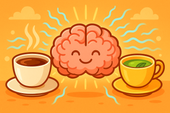
The Role of L-Theanine and Caffeine in Daily Motivation
Cortisol — often called the “stress hormone” — is both your alarm system and your reset button ⚡. It keeps you alert in the morning and helps you recover after challenges, but when it stays high too long, it drains your mood and energy. Learn how to balance cortisol naturally for steady focus, calm, and motivation. 🌿
-
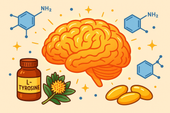
Supplements That Support Dopamine for Drive and Reward
Curcumin — the golden compound in turmeric — is more than a spice 🌿✨. It’s a powerful anti-inflammatory that protects dopamine neurons, supports brain clarity, and enhances mood. Learn how curcumin’s antioxidant properties help stabilize energy, reduce brain fog, and promote emotional resilience naturally. 🌼
-
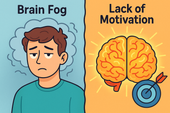
Brain Fog vs Lack of Motivation: What’s Really Holding You Back?
Hormones are the body’s invisible messengers — shaping energy, mood, focus, and motivation 🧠🌿. When they’re balanced, you feel clear, confident, and emotionally steady. Learn how key hormones like cortisol, serotonin, dopamine, and estrogen interact to influence your mental well-being and what you can do to keep them in harmony naturally. ✨
-
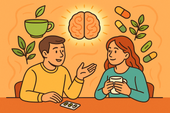
Supplements for Staying Collected During Disagreements
Science helps us understand why we feel, react, and change 🌿🧠. From brain chemistry to neurotransmitters and hormones, every emotional response has a biological root. Explore how research in neuroscience and psychology reveals practical ways to stay balanced, focused, and emotionally strong in daily life. 🔬✨
-

Managing Anger While Traveling
Supplements can help calm your nervous system and keep your emotions balanced while on the go 🌿. From magnesium and ashwagandha to L-theanine and omega-3s, learn how natural nutrients support stress resilience, focus, and emotional control — even through long flights, delays, and unpredictable travel days. ✈️
-

How to Keep Your Temper in Online Debates
Supplements can do more than fill nutritional gaps — they can help balance your energy, focus, and stress response naturally 🌿. From adaptogens to amino acids, the right nutrients support your brain chemistry and hormonal harmony for calm, steady productivity. Discover how supplements can build long-term resilience without the crash. ⚡🧠
-

Supplements to Stay Calm Before Public Speaking
Breathwork is one of the simplest yet most powerful tools for calming pre-performance stress 🌬️. By slowing and deepening your breathing, you lower cortisol, steady your heartbeat, and re-center your mind. Learn the science behind how controlled breathing activates your parasympathetic nervous system — helping you speak, perform, or focus with grounded confidence. 🌿
-

How to Handle Customer Service Stress Without Losing Your Cool 💬🧘♀️
Customer service can test even the calmest person’s patience. 😤 Learn how to handle difficult clients and daily pressure without losing your cool — through better mindset management, calming breathwork, and practical communication tools. Stay grounded, protect your energy, and transform stress into strength. 🌿
-
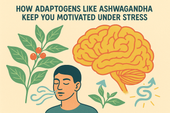
How Adaptogens Like Ashwagandha Keep You Motivated Under Stress
Feeling overwhelmed and unmotivated? 🌿 Discover how adaptogens like Ashwagandha can help you stay centered, focused, and energized under stress. Learn how supplements, breathwork, and therapy work together to restore your natural motivation and help you thrive — even during life’s toughest moments. 💪✨
-
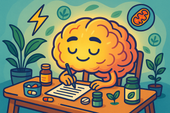
Supplements That Support Long-Term Productivity Without the Crash ⚡🌿
Cortisol — your body’s main stress hormone — can be both your best friend and worst enemy. ⚡ When balanced, it keeps you focused, energized, and ready to act. But when it stays high for too long, it leads to fatigue, anxiety, and emotional crashes. Learn how to regulate cortisol naturally through supplements, sleep, and stress management to maintain calm, steady productivity. 🌿
-
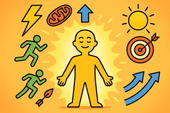
Why Energy Levels and Motivation Go Hand in Hand ⚡🧠
B-vitamins are the brain’s spark plugs 🔋. They turn food into fuel, support neurotransmitter production, and keep your mood, energy, and focus balanced. Learn how vitamins like B6, B9, and B12 work together to power the nervous system, reduce fatigue, and keep motivation high. 🌿
-
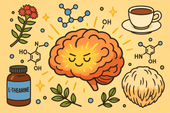
The Science of Motivation: Can Nootropics Help You Stay Focused? 🧠⚡
Nootropics are nature’s tools for sharper thinking and sustainable focus 🧠🌿. From Rhodiola and Lion’s Mane to L-theanine and Bacopa, these brain-boosting compounds enhance motivation, memory, and stress resilience. Learn the science behind how nootropics work — and how to use them safely for peak mental performance and clarity. ⚡
-
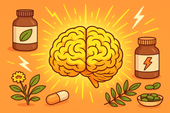
How Natural Supplements Can Boost Your Daily Drive
Cortisol is your body’s main stress hormone — powerful, necessary, but often misunderstood. ⚡ When balanced, it keeps you alert and energized; when chronically elevated, it drains mood, motivation, and focus. Learn how to regulate cortisol naturally through nutrition, supplements, and calming lifestyle habits for steady energy and emotional balance. 🌿
-
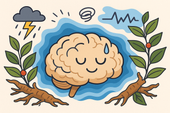
Ashwagandha for Stress and Low Mood
Breathwork is more than a relaxation tool — it’s a way to rewire your nervous system. 🌬️ Through intentional breathing, you can reduce stress hormones, improve focus, and calm emotional turbulence. This guide explores the science of breathwork and its powerful effects on mental clarity, resilience, and emotional regulation. 🌿
-
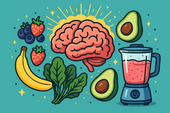
Mood-Boosting Smoothie Recipes
Your blood sugar affects far more than energy — it influences mood, focus, and emotional stability too 🍎. Learn how maintaining balanced glucose levels supports brain health, reduces anxiety, and prevents emotional crashes. Discover the foods and habits that keep your mind calm and your energy steady throughout the day. 🌿
-
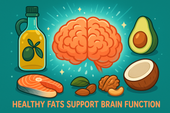
How Healthy Fats Support Brain Function
Your brain thrives on healthy fats 🧠💧. From omega-3s to MCTs, the right fats enhance focus, memory, and mood while protecting against inflammation and aging. This article explores how good fats — like those from olive oil, salmon, avocado, and nuts — build sharper thinking, emotional balance, and lasting brain vitality. 🌿
-
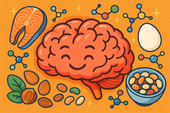
The Role of Protein in Mental Clarity
Protein isn’t just for muscles — it’s for your mind. 🧠 This guide explores how amino acids from high-quality protein fuel neurotransmitters, stabilize mood, and sharpen focus. Learn how balanced protein intake supports dopamine, serotonin, and energy regulation to boost mental clarity and emotional stability naturally. 🍳🌿
-
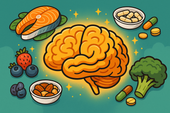
Nutrients That Support Emotional Stability
Your emotions are built from nutrients as much as from thoughts 🌿. This science-backed guide reveals the vitamins, minerals, and healthy fats that stabilize mood and reduce stress — from B-vitamins and magnesium to omega-3s and probiotics. Learn how balanced nutrition supports neurotransmitters, strengthens resilience, and promotes lasting calm and clarity 🧠✨.
-
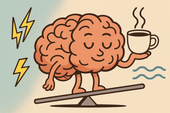
How Caffeine Affects Your Mood ☕
Your morning coffee might lift your spirits — but what’s really happening inside your brain? ☕ This in-depth guide explores how caffeine affects mood, motivation, dopamine, and stress. Learn how to enjoy caffeine mindfully without triggering anxiety, burnout, or emotional crashes. Discover the science behind your energy highs and lows — and how to find calm, sustainable focus. 🌿
-
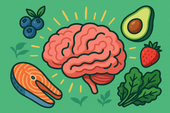
The Best Anti-Inflammatory Diet for Mental Health
Inflammation doesn’t just affect your body — it impacts your mood, focus, and emotional resilience too 🌿. This comprehensive guide reveals how an anti-inflammatory diet can support mental health by reducing neuroinflammation, balancing gut bacteria, and stabilizing blood sugar. Learn which foods to eat (and which to avoid) to protect your brain, boost serotonin, and promote lasting calm. 🧠✨
-

Why Sugar Spikes Can Worsen Depression
Sugar highs can make you feel good for a moment — but what comes next can fuel emotional crashes and deepen depression 🍭. This article explains how blood sugar spikes disrupt brain chemistry, increase inflammation, and destabilize serotonin. Learn how food, supplements, breathwork, and therapy can help you break the sugar–mood cycle and restore lasting emotional balance 🌿.
-
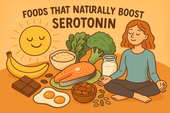
Foods That Naturally Boost Serotonin
Serotonin isn’t just a brain chemical — it’s your body’s built-in mood stabilizer 🌞. This in-depth guide explores how natural foods like salmon, eggs, bananas, and dark chocolate can elevate serotonin levels, while gut health, key nutrients, supplements, breathwork, and therapy create the perfect synergy for calm and emotional balance. Learn how to support your mind through diet, lifestyle, and mindset — naturally. 🌿
-
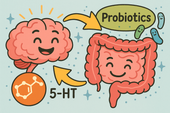
Probiotics for Mood Balance
-
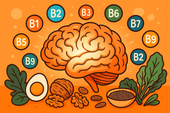
B-Vitamins and Their Role in Mental Health
Methylation is one of your body’s most important biochemical processes — influencing mood, energy, and focus. Powered by B-vitamins like B6, B9, and B12, it helps your brain create serotonin, detox efficiently, and maintain emotional balance. 🌿
-
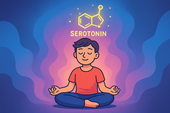
5-HTP for Serotonin Support
Calm isn’t just an emotion — it’s a physiological state where your body and mind finally sync in peace. By slowing your breath, softening your thoughts, and creating safety within, you restore the deep relaxation your nervous system craves. 🌿
-

St. John’s Wort for Mild Depression
Antidepressants can be life-changing for many — but understanding how they work and what natural options like St. John’s Wort can complement them is key. Learn how both approaches affect brain chemistry, mood balance, and long-term emotional wellness. 🌿
-
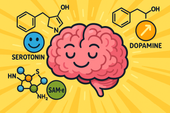
SAM-e: A Natural Mood Booster
Emotional regulation is the art of staying calm and grounded, even when life feels chaotic. By balancing your brain, body, and breath, you can respond with clarity instead of reacting from stress — building real emotional resilience and inner peace. 🌿
-

Rhodiola Rosea for Emotional Resilience
Neuroplasticity is your brain’s ability to grow, adapt, and heal — even after stress or trauma. Every thought, emotion, and habit reshapes your neural pathways, helping you build stronger emotional resilience, sharper focus, and lasting mental balance. 🌿
-
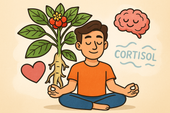
Ashwagandha for Stress and Low Mood
Adaptogens are nature’s stress balancers — powerful herbs like ashwagandha, rhodiola, and reishi that help your body adapt to tension, fatigue, and change. By regulating cortisol and supporting your nervous system, they build calm focus and emotional resilience from the inside out. 🌙
-
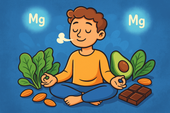
Magnesium’s Role in Emotional Regulation
Neuroscience helps us understand why we feel, think, and react the way we do. From brain chemistry and neural circuits to stress responses and emotional learning, the science of the brain reveals how our minds can heal, grow, and find balance. 🌿
-
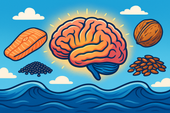
Omega-3 Fatty Acids and Emotional Well-Being
Nutrients aren’t just fuel — they’re communication signals that tell your brain and body how to function. From magnesium and vitamin D to omega-3s and B vitamins, the right mix of nutrients helps calm your mind, balance hormones, and support emotional and physical well-being. 🌙
-
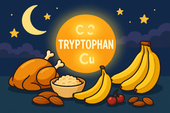
The Role of Tryptophan in Sleep Health
Mental health isn’t just the absence of illness — it’s the foundation of calm, focus, and emotional resilience. From managing stress and anxiety to nurturing self-compassion, understanding your mental well-being is the first step toward a balanced, more peaceful life. 🌿
-

Nutrients That Promote Nighttime Relaxation
Potassium does more than balance fluids — it also helps your body and mind relax at night. By calming nerves, reducing muscle tension, and supporting steady heart rhythm, potassium-rich foods like bananas, sweet potatoes, and coconut water can promote deeper, more restful sleep. 🌙
-

Sleep-Friendly Smoothie Recipes
Melatonin is your body’s natural sleep signal — a hormone that tells your brain when it’s time to rest. Learn how melatonin works, which foods and habits boost its production, and how to use it wisely for deeper, more restorative sleep without dependence. 💤
-
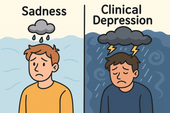
The Difference Between Sadness and Clinical Depression
Your emotions aren’t just in your mind — they’re written in your brain chemistry. Serotonin, dopamine, and GABA work together to regulate mood, motivation, and calm. When they fall out of balance, you may feel anxious, fatigued, or low. Learn how these brain chemicals influence your mental health and what you can do to restore harmony naturally. 🌿
-
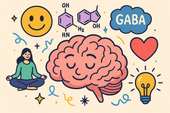
How Brain Chemistry Influences Mood
Your brain is a symphony of neurotransmitters — serotonin, dopamine, GABA, and more — working together to shape how you think and feel. When they’re balanced, you experience calm focus and emotional stability. When they’re not, mood swings and fatigue can follow. Learn how to naturally support these vital messengers for better mood and mental clarity. 🌿
-
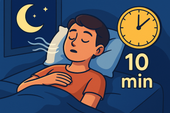
How to Fall Asleep in Under 10 Minutes
The military knows a few secrets about falling asleep fast — and they work even in chaos. This article explores the science behind rapid relaxation, including the famous “Military Sleep Method,” which teaches your body to shut down stress and rest on command. Learn how discipline, breath, and focus can help anyone fall asleep in minutes. 🌙
-
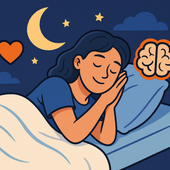
Why Emotional Resilience Improves Sleep
Emotional resilience isn’t just about mental strength—it’s also a key ingredient for better sleep. When your emotions are balanced, your body releases fewer stress hormones, your mind quiets faster, and your sleep becomes deeper and more restorative. Learn how to cultivate calm through mindset, breathwork, and daily habits. 🌙
-
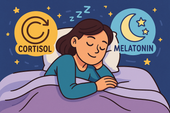
The Connection Between Stress Hormones and Sleep
Chronic stress can quietly reshape your body’s chemistry, raising cortisol, disrupting sleep, and draining your energy. This guide explores how long-term stress affects your nervous system, hormones, and rest—and how to restore calm through breathwork, nutrition, and daily recovery rituals. 🌿
-
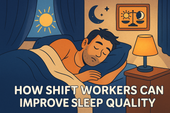
How Shift Workers Can Improve Sleep Quality
For shift workers, caffeine can be both a lifeline and a sleep disruptor. Learn how to use it strategically—boosting alertness during work hours without sabotaging rest. This guide explores timing, dosage, and smarter natural alternatives to keep your energy steady and your sleep restorative. 🌙
-

How to Sleep Better in a Noisy Environment
Living in a noisy area doesn’t mean sacrificing your rest. Learn practical and natural strategies to sleep better in loud environments—from using sound masking and breathwork to creating calming rituals that help your brain tune out the chaos. Find inner silence even when the world outside won’t quiet down. 🌙
-

Natural Solutions for Restless Leg Syndrome (RLS)
Struggling to sleep deeply and wake refreshed? This soothing guide explores how the body restores itself during quality sleep—and how to support it naturally. Learn about the science of rest, the role of nutrients, and the rituals that promote deep, uninterrupted slumber. 🌙
-
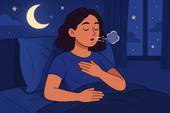
How to Overcome Middle-of-the-Night Anxiety
Middle-of-the-night anxiety can make even the calmest mind spiral into worry. This guide reveals practical, evidence-based techniques to help you stop the 3 A.M. overthinking loop—from breathwork and journaling to herbal supplements and therapy-based tools. Learn to retrain your nervous system and find peace when the world is asleep. 🌙
-

The Perfect Evening Herbal Blend
Discover the calming power of nature in your teacup. The perfect evening herbal blend combines chamomile, lemon balm, lavender, and adaptogens like ashwagandha to relax your body and quiet your mind before bed. Learn how to craft and customize a soothing, sleep-enhancing tea ritual that helps you unwind, restore, and wake up refreshed. 🌙
-
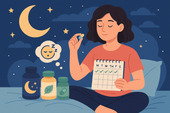
How to Cycle Sleep Supplements for Maximum Effectiveness
Wondering why your sleep supplements stop working after a while? This guide breaks down how to cycle sleep aids like melatonin, magnesium, and ashwagandha for consistent, long-term results. Learn when to rest your body, how to prevent tolerance, and what natural methods—like breathwork and therapy—enhance your sleep cycles. 🌙
-
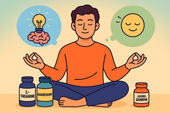
The Best Supplements for Both Relaxation and Focus
Calm your mind and sharpen your focus with the perfect blend of natural supplements. From L-theanine and magnesium to Rhodiola and Lion’s Mane, this science-based guide shows how to achieve relaxation and clarity at the same time. Discover stacks that support your nervous system, balance mood, and keep your mind laser-focused without the crash. 🌿
-

How to Sleep Better During Travel
Traveling can be thrilling—but sleepless nights can ruin even the best trips. From supplements like magnesium and melatonin to soothing breathwork and therapy-based techniques, this guide shows you how to sleep deeply on planes, in hotels, or across time zones. Learn to calm your body, reset your circadian rhythm, and build rest rituals that work anywhere in the world 🌙
-
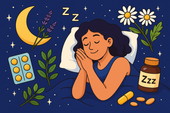
Improving Sleep in Menopause with Supplements
Menopause can make peaceful sleep feel impossible — but balance is within reach 🌿. This article explores how supplements like magnesium, ashwagandha, and black cohosh can ease night sweats, calm the mind, and restore your natural sleep rhythm during hormonal changes.
-
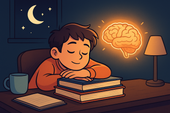
Sleep Support for Students During Exams
Exam stress can make it hard to rest — but sleep is what helps you perform your best 💤. This article explains how to improve sleep quality during exams through better study habits, natural supplements, breathwork, and therapy tools to calm the mind and sharpen focus.
-

Rest Strategies for Entrepreneurs
Entrepreneurs often burn out chasing their vision — but rest is the real fuel for success 🌙. This article explores science-backed recovery strategies for founders, including sleep, breathwork, therapy, and nutrition techniques that sharpen creativity and sustain performance.


















































